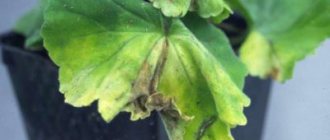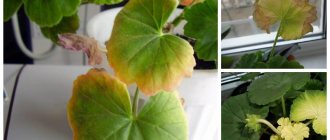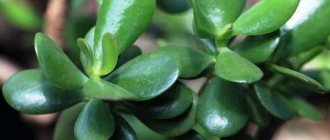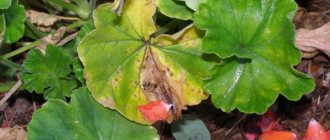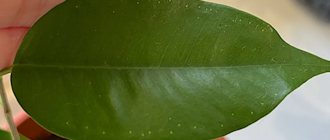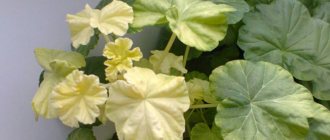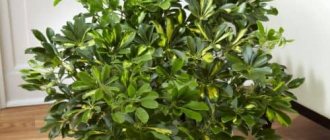Why do the leaves of indoor geraniums turn yellow: the main reasons
It is no secret that in most cases the reason why the leaves of indoor plants dry out and turn yellow is due to improper care. If the situation is not corrected, this may ultimately lead to the complete death of the plant. Therefore, you should study the typical shortcomings in growing geraniums at home.
Mistakes when planting and replanting plants
Sometimes the reason why geranium leaves acquire an unhealthy yellow color and begin to gradually die is an incorrectly selected pot. If its size is too small for the root system (especially in plants whose age is several years old), then pelargonium does not have enough capacity for development. But you should not choose a pot that is too large: in this case, the geranium will begin to actively grow roots to the detriment of green mass and flowering, which is also undesirable.
When planting a plant, it is important to ensure good drainage. Expanded clay purchased at a flower shop or the hardware department of a supermarket is ideal. If there is insufficient drainage, excess moisture will not leave the soil. Proper air circulation will also be impaired. In some cases, the yellow color of the leaves is caused by damage to the roots due to careless transplantation.
Lack of minerals
The supply of minerals found in the soil is a resource that quickly runs out. And immediately after transplanting into new soil, the elements are not always contained in the required quantities. But geranium spends a lot of energy on flowering and growth. Therefore, there is a need for additional and regular addition of mineral complexes to the soil through root feeding. The need for them increases during the growing season, when pelargonium is actively growing and blooming. A lack of minerals often causes the leaves to turn yellow. But it is important to remember that an excess of elements will also negatively affect the condition of the plant.
Improper care at home
As already mentioned, geranium is a fairly unpretentious house flower that feels good in the room. But to prevent diseases and yellow leaves from appearing, you must try to provide it with suitable conditions in which the plant will feel comfortable.
Pelargonium loves light, but direct sunlight is harmful to its leaves. Low and excessive air humidity in the room can cause great damage to the appearance of the plant. Its optimal figure is 50–60%. Geranium dries in cool drafts. In autumn and winter, it is advisable to keep the pot away from heating devices in the apartment - the heat from them will cause the leaves to turn yellow and dry out. It is better to take it out to a cool glazed balcony if the temperature in the loggia remains around 12 °C, reducing watering to once a week.
Another common mistake is related to watering. Its frequency should depend on the time of year: in warm months, geraniums need to be watered more often. You should also pay attention to the quality of the water. If it is too hard, it will lead to excess calcium in the soil. The leaves will react to this and turn yellow. To make water suitable for irrigation, it must be allowed to settle for several days; add a couple of drops of lemon juice or a small pinch of citric acid.
What to do if geranium leaves turn yellow
The plant can be saved if the necessary measures are taken in time. First of all you should:
- Make sure the pot is suitable for geraniums and has good drainage. If necessary, you need to transplant it into a container that meets all the criteria as soon as possible. If the geranium blooms, then all flower stalks must first be carefully cut off.
- The pot should be placed on the sunny side. If the plant is exposed to direct rays, you will need to create temporary artificial shading. It is important that pelargonium does not stand in a draft.
- Avoid exposure of geranium to heating devices.
- If possible, maintain an acceptable temperature during the cold season. In other months there are no strict recommendations in this regard.
- If the air is too dry, you can place a container of water or moistened expanded clay next to the pot. Florists do not recommend spraying.
- Adjust watering and fertilizing of the plant. It must receive sufficient amounts of water and minerals. But overflow and excess of elements are also destructive.
When caring for pelargonium in an apartment, it is best to adhere to the “golden mean” rule. If you correct the mistakes described above in time, the flower will not disappear and will quickly recover, delighting you with carved green leaves and abundant flowering.
Small leaves
Small leaves are one of the most common problems with geraniums and can be caused by a number of reasons.
Why is this happening?
- One of the reasons why the leaves have become small may be the small size of the container in which it is planted or poor drainage in it.
- In the case when the pot is selected correctly and has proper drainage, but the leaves are still too small, you need to pay attention to the soil, perhaps it is depleted.
- In addition, if the geranium has been growing for a long time and is in the flowering period at this moment, it may be time to thin out its leaves somewhat.
- Another reason may be the temperature regime that is inconvenient for geranium - the plant does not like high and low temperatures.
What should I do to solve the problem?
There are several ways to solve the problem:
- change the pot to a larger one;
- change the indoor microclimate;
- improve drainage;
- replace the soil;
- carry out foliar fertilizing with nitrogen fertilizers;
- trim leaves (no more than once a year).
If you exceed the dosage of fertilizers, you can create a new problem - burn the geranium leaves, so you must follow the requirements that the manufacturer indicates on the packaging of the fertilizer bag.
How to prevent shredding?
- As a preventive measure, in order to preserve the decorative properties of the plant, it is necessary to carry out regular annual sampling (the period of the end of the winter season and the beginning of the spring).
Cut geranium stems can be used as seedlings to grow new plants from them. - The second option would be to pinch the top of the plant, which will stimulate the growth of side shoots, which make the plant even more beautiful by increasing its “fluffiness.”
- In addition, it is recommended to regularly change the pot to a larger one to create a larger base for the roots of the crop and add rich new soil.
Pelargonium: other diseases and care errors
Geranium leaves indicate the health of the entire plant. This is a kind of indicator that can indicate possible diseases of pelargonium, incorrect watering and fertilizing patterns. There are some specific “symptoms” that can tell you a lot.
The edges of geranium leaves dry out
If the edges of the leaf blades of a geranium begin to dry, there may be two reasons for this condition:
- The plant does not receive enough moisture. This drying usually occurs if the pot is in a very hot place. It is better to move the geranium to partial shade.
- The root system of pelargonium was damaged. You can try to replant the plant by treating the roots with a weak solution of potassium permanganate. But to be on the safe side, it is better to cut and root the cuttings in water or soil so as not to lose the variety.
Leaves curl inward
If the leaves of pelargonium begin to curl inward, this may be evidence of an imbalance of mineral substances. This condition is caused by a lack of nitrogen or excess potassium. Nitrogen in large quantities is only needed during the growth stages of the plant, so the leaves of young plants often curl. To prevent deficiency or oversaturation of elements, it is recommended to use ready-made complex mineral fertilizers for flowering plants: they contain substances in the required proportions.
podokonnik.temadnya.com
The plant has little green part
Geranium is not a whimsical plant, but despite this, it can react to improper care.
Why does this happen?
Many flower growers with extensive experience know firsthand that geraniums take on an unattractive appearance not only from various diseases, but also from improper maintenance.
This is what happens - the stems stretch out and there are very few leaves left on them. Very often, beginning flower growers observe this phenomenon in winter.
But you shouldn’t immediately throw the plant in the trash bin - the flower can and should be saved. It is enough to simply place the flowerpot in the sunlight, while pre-trimming the elongated shoots to the desired height.
In addition, the flower must be rotated periodically so that it is even and lush. If even after these manipulations, the plant stops growing and stops producing new leaves, then measures need to be taken.
What to do?
First of all, the plant is carefully examined for the presence of insects and diseases. If neither one nor the other could be identified, then it’s a matter of fertilizing and soil acidity. You can do this as follows:
- Replant the plant by changing the soil. This should be done with special care so as not to damage the roots of the plant, otherwise it will take a very long time to recover.
- Carry out constant feeding, and you can use not only purchased complexes, but also folk remedies. For example. When replanting, use egg shells as drainage.
Prevention
Almost all diseases and problems of pelargonium arise due to violations in care, so to prevent them you just need to follow simple rules:
- Maintain the correct temperature;
- Control air and soil humidity;
- Control lighting;
- Regularly feed the soil;
- Control the occurrence of pathologies in the plant;
- Fight insects.
Among insects, you should pay special attention to spider mites, whiteflies and aphids. They often appear in places with dry air and are carriers of infections and viruses. If these insects are found in the room where flowers grow, it is necessary to wash the plant and treat it with insecticides.
Medicinal preparations for geranium
The following medications can be used to combat geranium problems:
- Aspirin. It can be used when insects are detected. To prepare the solution you will need one tablet of medicine and 8 liters of water. The resulting composition must be sprayed on geranium leaves. The procedure can be repeated after 3 weeks.
- Marathon. This drug is also intended to combat insects, but they need to be watered in the soil. The procedure can be carried out a few days after planting.
- Messenger.Used to increase the plant’s own immunity.
- Monterey. It is sprayed onto plants when traces of caterpillars are found on it.
Geranium has long been considered one of the most useful plants. The medicinal flower is capable of killing a huge number of bacteria and treating a variety of diseases, from a common runny nose to purulent wounds. That is why high-quality care will allow its owner to create a healing atmosphere in his home.
www.missorchid.ru
Leaves and flowers fall
Geranium pleases the eye with its lush inflorescences, but suddenly for some reason they began to fall off along with the leaves.
What are the reasons?
Flower growers who have been growing geranium for a long time claim that in order for geranium to prepare for flowering, it needs to create the appropriate conditions - moderate temperature and a sufficient amount of useful microelements.
If there is not enough boron, the buds will begin to fade, even in their buds (why does geranium wither and what to do to make the flower come to life?). Measures must be taken immediately, otherwise the plant will shed the formed inflorescences and not produce new ones.
There is no appropriate fertilizer in the store, prepare it yourself - dissolve 1 gram of boric acid in a liter of water and spray the geranium.
Attention! Inspect the unopened inflorescences; if small holes are found, then the plant is affected by leaf-roller caterpillars, which droop inside the plant and begin to eat it.
In this case, the caterpillars are collected and the plant is treated with a bacterial spray - the caterpillars die on the second day. Once the geranium has laid new buds, it cannot be moved to another place - it can drop them.
Lack of nutrients in the soil
Incorrectly selected soil or depleted soil in a flower pot is the most common cause of yellowing geranium leaves. If there is a lack of at least one of the beneficial nutrients, the plant loses its decorative qualities, the leaves change color, then dry out and fall off. To maintain the natural color of leaf blades, sulfur, nitrogen, magnesium, zinc, copper, iron, phosphorus, boron and manganese are needed. Negative external changes in the plant will tell you which element it is missing:
- Gradual yellowing of the entire plant (stems, petioles and leaves) at the same time indicates a lack of sulfur;
- If yellowness spreads on older leaves (from the edge to the central part), this is a signal of nitrogen deficiency;
- Yellowing or chlorosis between the veins on older leaves is a magnesium deficiency;
- Yellowing young leaves with curling edges indicate a lack of zinc;
- The leaves become yellow-green from the base to the edges - a lack of copper;
- Yellowing between the veins on the surface of young leaves is a lack of iron;
- The upper leaves remain green, but the lower ones begin to turn yellow at the edges, and then gradually chlorosis spreads over the entire surface - this is a lack of phosphorus;
- The appearance of small yellowish spots on the surface of middle-aged leaves indicates a lack of boron;
- Dotted yellow spots gradually fill the entire surface of the leaf - this is a deficiency of manganese.
Chlorosis can be stopped only at the first signs and only in the earliest stages. To do this, it is recommended to urgently transplant the geranium into a new soil mixture with all the necessary nutritional supplements. Specialized stores offer a wide range of soil mixtures recommended specifically for growing geraniums. After some time, such mixtures also become depleted, so it is necessary to regularly add mineral fertilizers to the soil.
Excessive watering
The watering regime, namely volume and frequency, also play an important role in the full development of indoor geraniums. Often yellowing of the leaf mass begins due to an incorrectly selected regime. A slight drought or untimely watering will not cause much harm to geraniums, but repeated overwatering is the beginning of acidification of the soil and death of the root part due to rotting. The emerging root rot prevents the entire plant from being supplied with sufficient nutrition. Yellowness and wilting appear on the leaves. The flower begins to slowly die.
The unpleasant smell of the soil mixture, which appears due to the beginning of the rotting process, and the presence of numerous small fleas that jump on the surface of the soil will help determine excess moisture in the soil. It will not be possible to save the plant by completely stopping soil moisture. The rotting process will continue. It is urgent to replace the substrate in the pot with geranium, and when replanting, inspect and treat the root part of the flower. It is recommended to remove diseased and damaged roots and treat the remaining parts with a disinfecting solution. If more than half of the root system is already damaged, then you can try to save the geranium with the help of green, healthy shoots. By cutting them into cuttings and rooting, you can get a new healthy plant. In further care, it is worth paying more attention to the watering regime so as not to repeat mistakes.
Sunburn
Geranium tolerates direct sunlight and can be outdoors in the summer under the sun's rays. But the impact of such rays on a flower through a window glass leaves sunburn on the leaf plates. First, those leaves that are closest to the glass suffer, and sometimes even pressed against it. Yellow-brown spots appear on them. Such yellowing does not pose a threat to the life of the geranium, but its decorative qualities still suffer. After changing the growing location and pruning damaged shoots, the beauty of the geranium is gradually restored.
The appearance of pests
Geranium is not often attacked by harmful insects, but there are still cases when pests such as spider mites, whiteflies and mealybugs appear in a flower pot with a plant. Yellowing and falling of leaves begins after the plant loses the juice found in the stems and leaves. It is a favorite delicacy and at the same time the main food for these pests. The greatest effectiveness in combating this invasion can be expected only in the early stages of crop damage. Here you cannot do without special chemical preparations of general or targeted action. The most popular and effective flower growers consider Aktara, Fitoverm and Atellik.
Diseases
Geranium is susceptible to diseases such as chlorosis, root rot and rust. The fungal disease rust is considered the most dangerous and, unfortunately, the most common. The first signs of this disease are many small spots of yellow or light brown throughout the leaf part. After a short time, these stains become dry and, when cracked, crumble into a rust-colored powder. This is what fungal spores look like, which can destroy an entire geranium bush. If assistance is not provided in a timely manner, the plant first loses its leaf part and then dies completely.
To save a plant from a harmful disease, it is recommended:
- Trim off all diseased parts of the plant;
- Treat the indoor crop with the most suitable fungicide.
Before using chemicals, you must carefully read the instructions!
Natural causes
The life cycle exists not only in humans and animals, it is also present in representatives of the flora. Plants also reach a certain age when some parts, namely the leaves, begin to die. Most often these are 1-2 leaves at the bottom of the plant. Yellowing continues gradually until it completely covers the entire surface. After this, the leaf dries out. This natural reason should not bother the grower, because the entire plant is not in danger. After trimming a dried or yellowed leaf, the geranium will remain just as attractive and will continue to grow and develop.
flowertimes.ru
Leaves curl inward If pelargonium leaves begin to curl inward, this may be evidence of an imbalance of mineral substances. This condition is caused by a lack of nitrogen or excess potassium. Nitrogen in large quantities is only needed during the growth stages of the plant, so the leaves of young plants often curl. To prevent deficiency or oversaturation of elements, it is recommended to use ready-made complex mineral fertilizers for flowering plants: they contain substances in the required proportions. Often the cause of leaves curled at the edges is pests. Most often - spider mites. To detect it, you need to examine the leaf blades of pelargonium from all sides. It is advisable to use a magnifying glass. Ticks can be easily treated with chemicals - insecticides. Several treatments may be required. Viral infection is much more dangerous. With it, the inflorescences take on a clumsy, ugly shape. In this case, it is unlikely that it will be possible to save the geranium. It should be thrown out of the house to prevent the infection from spreading to other indoor plants. Pelargonium withers in a pot If geranium withers in a pot and slowly dies, then the reason lies in root rot. This disease can easily destroy a plant. Such pelargonium is usually thrown away, cutting off healthy cuttings for further rooting. The instruments must then be disinfected. To avoid root rot, you should try not to overwater the plant and ensure good drainage. Geranium leaves turn black Geranium leaves turn black if not properly cared for. Dry spots are associated with insufficient moisture, and “wet” spots that are slippery to the touch, on the contrary, are associated with excess moisture. Sometimes mealybugs are the cause of black spots. A plant infected with them begins to shed its leaves. In places where scale insects live, sooty fungi form, causing a black coating to appear. This disease is treated with insecticides. White coating on the plant White coating on geraniums is a sign of spider mites. To get rid of it, you need to remove the parasites from the plant, and then treat it with a special composition: a solution of an acaricidal agent. Leaves become smaller Pelargonium leaves inevitably become smaller with age. If the plant is too old, then its freshest shoots should be cut off for further rooting. Other reasons for small leaves in pelargonium may be: nitrogen starvation (it is necessary to additionally apply the substance in the form of foliar feeding); low indoor air humidity; high air temperature. Pelargonium leaves turn yellow and dry: preventive measures It is much easier to prevent yellowing of leaves than to cure an already diseased plant. In order not to have to fight to save your favorite geranium, you should: Replant the pelargonium in a suitable pot in a timely manner. Find a place for it, closed from drafts, with enough diffused light. Water as the earthen clod dries out. Apply mineral complex fertilizers suitable for flowering plants in a timely manner. The application rates and schedule are indicated in the instructions for the product. During the flowering period, it is recommended to do root feeding twice a month. Organic fertilizers will also be useful. In winter, you need to try to keep the geranium cool. Regularly inspect the plant for infection by pests, bacteria, fungi and viruses, providing treatment if necessary. Yellowing of geranium leaves is an alarming sign. It is important to understand in time the cause of such a plant malaise. By carefully examining it and analyzing the conditions under which the pelargonium is kept, you can find what provoked such a reaction. The sooner the errors are corrected, the less damage will be done to the geranium. ************************************************* ALSO SEE THE BEST RECIPES VISIT THE LINK https:/ /www.ok.ru/kopilkadac/topics/1456755624 ************************************** * RECIPES FROM OUR GROUP: subscribe to our group’s channel on YouTube: https://www.youtube.com/channel/UCh3yCLRgNaVrgSB6rCdQV_g
ok.ru
Other diseases: causes and solutions
Problems when growing geraniums mainly arise from poor care, but flower diseases caused by bacteria should not be ruled out. Blackening leaves and stems should alert the gardener.
- weeping spots on the bottom of the leaf, round in shape;
- the spots subsequently develop into large dark brown lesions;
- if you feel the damage, it will be hard;
- the infection spreads very quickly and therefore the stem turns black in a few days;
- the roots are black, but without signs of rot.
Often blackening of the leaves and stem leads to the death of the plant, but it is worth noting that such an infection cannot be treated, and it is better to destroy the flower along with the soil and disinfect the flowerpot.
The main measures to prevent this disease is compliance with sanitary standards. All tools used to work with the plant must be constantly disinfected.
In addition, it is worth monitoring the air humidity in the room where the geranium is located and conducting ventilation. Don’t forget to take the flower out onto the balcony in the summer, this will have a beneficial effect on its health.
The requirements for caring for geraniums are not complicated and quite doable. When grown correctly, geranium will delight you with magnificent inflorescences for a long time.
If you find an error, please select a piece of text and press Ctrl+Enter.
–Categories
- Beauty (1654)
- Photos (1233)
- City (212)
- Animals (178)
- Nature (132)
- Flowers (132)
- Landscape (131)
- Gardens and parks (82)
- Locks (62)
- Still life (56)
- Women (37)
- Portrait (22)
- Children (7)
- Painting (843)
- Women (200)
- Landscape (127)
- Portrait (72)
- Flowers (52)
- Animals (46)
- Still life (42)
- Children (28)
- Interesting (513)
- Countries (427)
- Animals (409)
- Jokes (408)
- Culture (371)
- Traditions (31)
- Improving your life (367)
- City (342)
- Architecture (335)
- Flowers (327)
- nature (307)
- Women (304)
- People (303)
- Humor (297)
- Yummy (282)
- Baking (30)
- Meat (17)
- Desserts (16)
- Fish (4)
- Landscape (279)
- Classic (266)
- Videos (257)
- art (252)
- Sculpture (242)
- Lyrics (205)
- Quotes (201)
- Lessons (200)
- Personality in history (184)
- How to make work fun (160)
- Health (160)
- Computer (141)
- Handicrafts (138)
- Facts (138)
- Useful links (123)
- Still life (121)
- music (107)
- Ekocentrs (98)
- Realtor - oddities of the profession (58)
- Good people (22)
- Quotes from successful people (13)
- Our films (4)
- Illustrations (90)
- Income (89)
- Erotic (54)
- Parable (34)
- Cartoons (24)
- Stained glass (17)
- VICTORY (10)
- Cinema (10)
- Postcards (6)
- Books (1)
- (0)
-Music
–Book lover
-I'm a photographer
Geranium diseases
Geraniums are affected by fungal and bacterial diseases. The most common diseases include the following:
- 1. Gray rot. Most often it occurs due to waterlogging, excessive spraying, excess nitrogen or poor ventilation of the room. In order to get rid of rot, it is necessary to treat the geranium with Vitaros or Fundazol.
- 2. Spotting (Alternaria blight). When this disease occurs, the causative agent of which is a fungus, spots with a snow-white coating can be seen on the leaves of pelargonium. The cause is high humidity. To eliminate the disease, you need to treat the geranium with the fungicides Gamair or Glyokladin.
- 3. Root rot. Signs of the disease are spots on the bottom of the geranium. It appears due to an excess of fertilizer, excessive soil moisture, insufficient ventilation and lack of heat and light. They fight root rot by reducing watering and treating with Rovral fungicide.
- 4. Verticillium wilt. This problem can be detected by yellowing of leaves and inflorescences. Caused by a fungal pathogen. Infection of the plant's root system occurs through the soil. To eliminate the disease, it is necessary to treat the plant with Trichodermin and replant it in fresh soil.
- 5. Rust. Appears in the form of yellowish and brown small spots on the surface of the leaves. Over time, the affected parts of the plant begin to fall off. To heal geranium, you must first eliminate the diseased leaves, stop spraying and lower the air humidity, and then treat the pelargonium with Topaz.
- 6. Root and stem late blight. The disease manifests itself in the lower part and root system of geraniums. The main reasons for its occurrence are waterlogging, insufficient lighting and excess fertilizer. Treatment consists of treating the plant with Ridomil.
- 7. Dropsy. Forms in the form of cones on the lower part of geranium leaves. The disease develops due to excessive soil moisture and too cold, humid air. To prevent the formation of new swelling, it is necessary to change the drainage, reduce watering and spraying, and also ventilate the plant more often.
- 8. Bacterial rot. When it occurs, watery spots can be found on the leaves, which over time begin to dry out, remaining on the geranium. Oxychom will help you cope with this disease. It is also recommended to eliminate diseased areas of geranium and stop spraying. Feed the plant with a mineral complex containing potassium.
naogorode.net
Diseases and pests
If, with good competent care, geranium leaves still turn yellow, then the cause may be diseases of indoor plants.
Gray rot
Pathogen: Botrytis cinerea (gray botrytis). Lives in the ground from one to two years. Spreads by wind, with soil, water, and other infected plants.
The disease is characterized by damage to foliage. Areas with a velvety coating and brown spots form on it. The disease affects the lower leaves most severely.
First aid: treatment with fungicides (Fundazol, Vitaros).
Rhizoctonia rot
Pathogen: Rhizoctonia solani. Infection occurs through the soil.
The disease affects the roots and stems of the plant, causing depressed spots to appear on the stem. The fungus begins to spread over them (to a height of no more than 25 cm).
First aid: stop watering and treat with fungicides (Fundazol, Vitaros, Rovral).
Alternaria blight
Pathogen: Alternaria alternata. Infection occurs through the soil, especially under greenhouse conditions (warm and humid).
The reason is high humidity.
Yellow and brown spots with a light center appear on the leaves. At high humidity they are covered with dark velvet. Most often, the disease affects zonal pelargonium.
First aid: treatment with fungicides (Skor, Ridomil Gold, Rovral).
Verticillium wilt
Pathogens: Verticillium dahliae and albo-atrum. Lives in the ground for up to 15 years. Infection occurs through damaged roots during rooting of cuttings.
The disease is especially active in summer, when the weather is warm and the soil dries quickly.
It begins with yellowing of the lower leaves. Subsequently, the disease covers the entire plant. In severe cases, you have to throw away the pelargonium along with the soil.
First aid: maintaining proper soil moisture and treating with fungicides (Fundazol, Vitaros, Rovral).
Rust
Pathogen: Puccinia pelargonii-zonalis. Transmitted through other affected plants with water and air.
The onset of the disease can be determined by brown dots on the stem. Then the leaves begin to turn yellow. Gradually they all fall off.
First aid: reducing air humidity, stopping spraying, getting rid of diseased leaves, treating with fungicides (Topaz).
If indoor geraniums turn yellow, you need to inspect the plant to see if it has been attacked by parasites. They rarely attack pelargonium, since the strong specific smell repels them.
Pelargoniums are usually plagued by whiteflies. She lives and lays larvae under the flower. If the colony of pests grows to a large size, the leaves turn yellow or turn brown. You can see the whitefly with the naked eye. It is up to 3 mm in size with white wings.
When geranium leaves begin to turn yellow and curl inward, it is an aphid infestation. It is difficult to get rid of it, but it is possible. To do this, remove all affected parts of the plant, and then treat with Fitoverm or Mospilan.
Geranium flower - why do the leaves turn yellow? Other plant diseases
Geranium leaves turn yellow - what to do? Causes of the problem and ways to eliminate it.
After transplanting geraniums, the leaves turn yellow. The plant has slowed down. The lower leaves fall off. Reason: disruption of the root system during transplantation. Ways to eliminate the problem: do not allow the soil to become waterlogged, cover the plant with a greenhouse, carry out frequent spraying, and water with Kornevin.
Why do geranium leaves turn yellow and dry? The reverse side of the sheet is covered with small pimples. Cause of the disease: thrips. Treatment: plant isolation. Treatment of geranium with a solution of the drug Fitoverm, repeat the procedure after 5 days.
Why do the lower leaves of geraniums turn yellow? They lose their intense color, turn yellow and fall off . Cause of the disease: lack of nitrogen in the soil. Ways to eliminate it: regular fertilizing with complex, liquid fertilizers.
Light brown and dark brown spots appeared on the stem of the geranium. Geranium leaves turn yellow and dry, and they become covered with radial or V-shaped brown spots, covered with fluff . Disease: Botrytis fungus. Treatment: moderate overhead watering at the beginning of the day, removing affected areas of geranium, treating plants with fungicides.
Geranium leaves are turning yellow. On the reverse side they are covered with brown color in a radial or V-shape. Then the entire leaf darkens, right down to its veins. The disease spreads to geranium stems . Causes of the disease: bacterial rot of the stem and leaves of geranium. Ways to treat the disease: removal of infected plants. It is necessary to avoid overhead watering, use well-ventilated soil for planting, and treat geraniums with fungicides.
The geranium's leaves turned yellow and some of them fell off. On the back of geranium leaves there are small yellow spots that spread out to the sides in concentric circles. Cause of the disease: fungal leaf rust. Treatment of the disease: isolate the geranium, remove damaged leaves, avoid overhead watering, treat the flower with fungicides.
Why do geranium leaves have small leaves and turn yellow? Reasons: insufficient nutrition or small pot volume. Perhaps the plant is old. Geraniums need to be renewed every 2 years. Otherwise, its leaves become smaller.
Geranium leaves are white, some of them acquire a matte color. They turn yellow and fade over time. The roots become soft, their shell is easily separated from the core. Causes: geranium root rot. Treatment of the disease: increase soil acidity and high soil moisture. The plant is not sprayed; it is watered rarely, but abundantly. It is necessary to isolate the geranium from other plants, replant it with removal of damaged roots, treat (spray and water) with Fitosporin-M, Alirin-B, Fitolavin and their analogues.
A healthy geranium, but the leaves dry out on it, before which they lose the intensity of their color and remain hanging on the stem. Brown spots are visible on the cut of its stem, but the root system remains healthy. Geranium disease: verticillium wilt. Treatment of the disease: the affected geranium is immediately destroyed along with the substrate where it grew. Other plants are treated with Alirin-B and analogues for prevention.
Why do geranium leaves turn yellow at the edges? Reasons: careless transplantation, excess moisture and lack of fertilizing.
zhvetnik.ru
The greenery on the flower does not grow
Why doesn't it grow?
Geranium has a very pleasant and specific aroma, but despite this, some insects still attack the plants. At the very beginning of infection, the flower looks healthy, its development simply stops and the leaves stop growing. Geraniums will not grow if they are attacked by mealybugs. They are very small and can accumulate in the most secluded places, feeding on green matter.
Whitefly is another pest that is not afraid of the smell of geraniums. Finding out its presence on a plant is very simple - shake the flower, if white dust appears, then it’s time to take action (why do geranium leaves turn white?).
What to do?
It is necessary to identify the cause - this is done by examining the plant. If parasites are found, then it is worth applying insecticides by treating the plant according to the instructions written on the packaging of the drug.
If the plant does not have diseases, it is worth reconsidering the conditions for keeping the flower - change the soil and flower pots, apply fertilizing and fertilizers, move the pot to a lighter windowsill.


